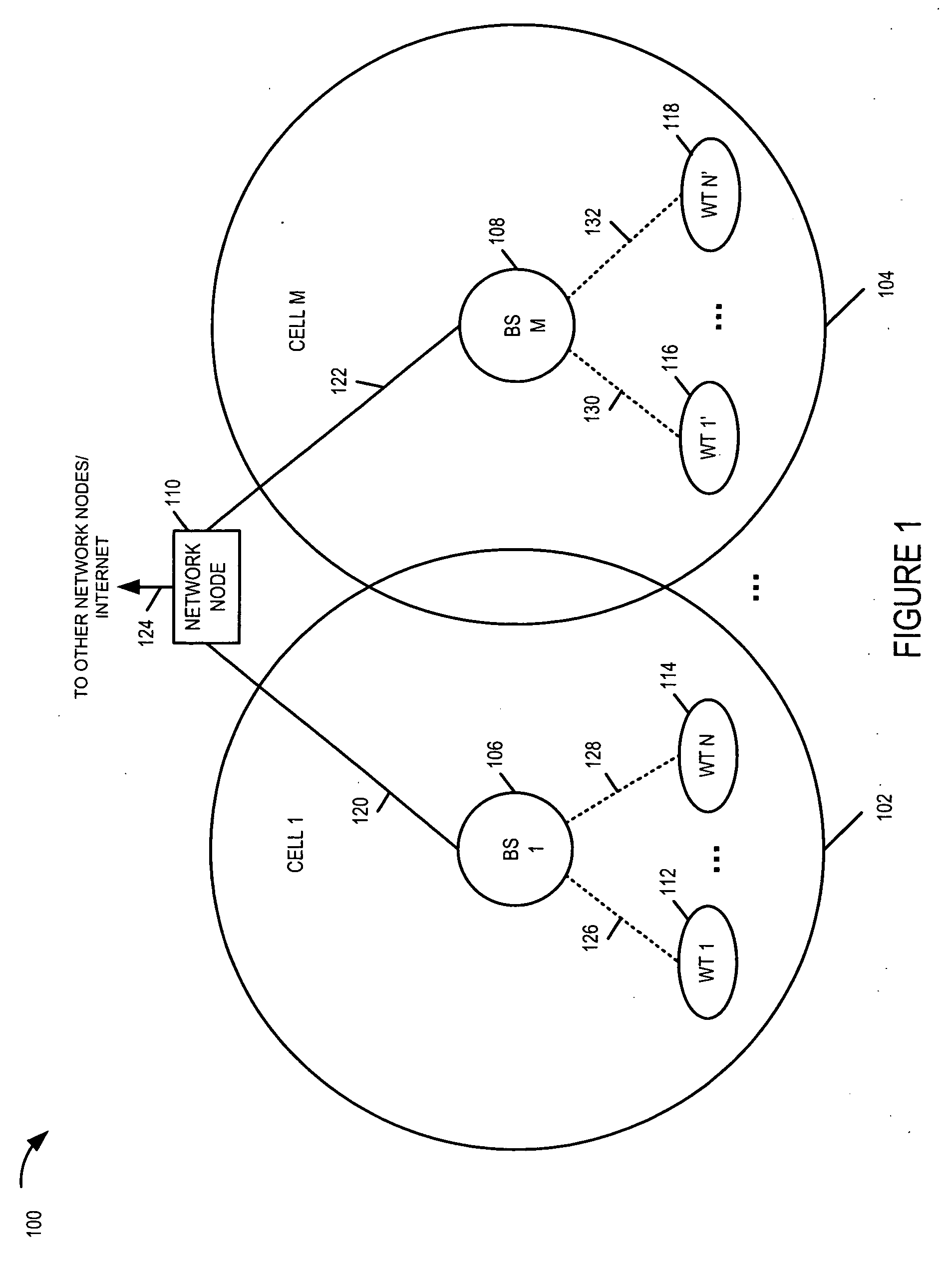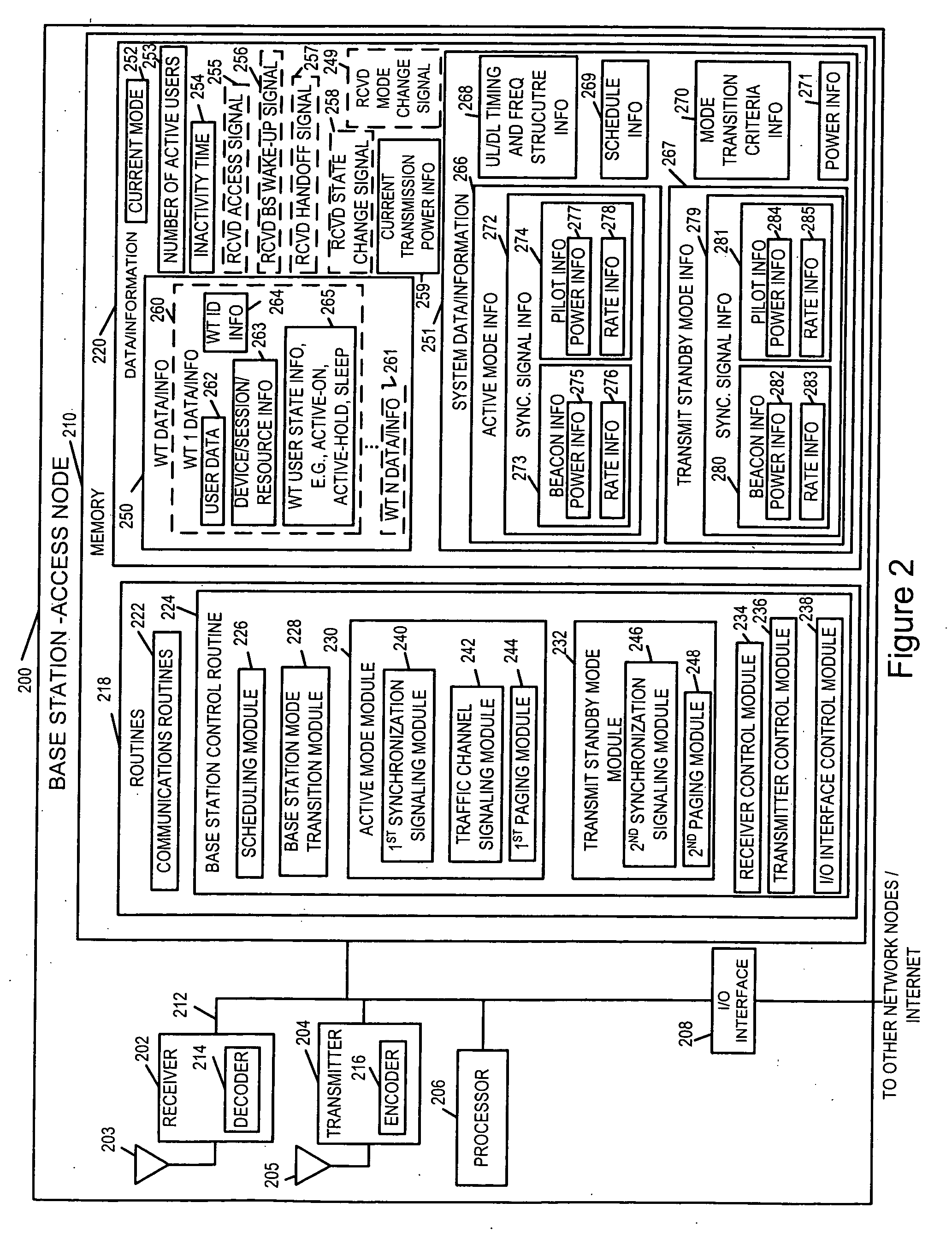Methods and apparatus for use in a wireless communications system that uses a multi-mode base station
a wireless communications system and multi-mode technology, applied in the direction of power management, synchronisation arrangement, high-level techniques, etc., can solve the problems of adverse effects and waste of base station power, and achieve the effects of reducing base station transmissions, and reducing interference with communications in neighboring cells
- Summary
- Abstract
- Description
- Claims
- Application Information
AI Technical Summary
Benefits of technology
Problems solved by technology
Method used
Image
Examples
Embodiment Construction
[0033]FIG. 1 is a drawing of an exemplary communications system 100 implemented in accordance with the present invention and using methods of the present invention. Exemplary communications system 100 may be, e.g., an orthogonal frequency division multiplexing (OFDM) multiple access wireless communications system. Exemplary system 100 includes a plurality of base stations (BS 1106, BS M 108), each BS (106, 108) having a corresponding cellular coverage area (cell 1102, cell M 104). The BSs (106, 108) are implemented in accordance with the present invention, and support (i) an active mode of operation and (ii) a transmit standby mode of operation. The BSs are coupled together via a backhaul network. System 100 also includes network node 110, e.g., a router. Network node 110 is coupled to (BS 1106, BS M 108) via network links (120, 122), respectively. Network link 124 couples network node 110 to other network nodes, e.g., other BSs, routers, Authentication-Authorization-Accounting (AAA...
PUM
 Login to View More
Login to View More Abstract
Description
Claims
Application Information
 Login to View More
Login to View More - R&D
- Intellectual Property
- Life Sciences
- Materials
- Tech Scout
- Unparalleled Data Quality
- Higher Quality Content
- 60% Fewer Hallucinations
Browse by: Latest US Patents, China's latest patents, Technical Efficacy Thesaurus, Application Domain, Technology Topic, Popular Technical Reports.
© 2025 PatSnap. All rights reserved.Legal|Privacy policy|Modern Slavery Act Transparency Statement|Sitemap|About US| Contact US: help@patsnap.com



